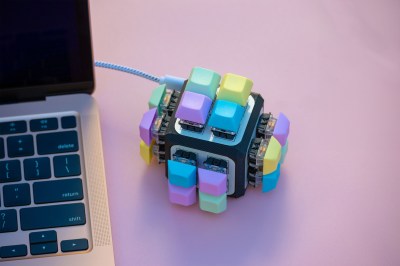We usually think of a hydraulic system as fully self-contained, with a hydraulic pump, tubing, and actuators filled with a working fluid. This of course adds a lot of weight and complexity that can be undesirable in certain projects, with the Saturn V Moon rocket demonstrating a solution to this which is still being used to this day. In a blast-from-the-past, a December 1963 article originally published in Hydraulics & Pneumatics details the kerosene-based hydraulics (fueldraulics) system for the S-1C stage’s gimbal system that controlled the four outer engines.
Rather than a high-pressure, MIL-H-5606 hydraulic oil-based closed loop as in the Saturn I, this takes kerosene from the high-pressure side of the F1 rocket engine’s turbopump and uses it in a single-pass system. This cuts out a separate hydraulic pump, a hydraulic reservoir, which was mostly beneficial in terms of reducing points of failure (and leaks), ergo increasing reliability. Such was the theory at the time at least, and due to issues with RP-1 kerosene’s relatively low flash point and differences in lubricity properties, ultimately RJ-1, RP-1 and MIL-H-5606 were used during checkout leading up to the launch.
In hindsight we know that this fueldraulic system worked as intended with all Saturn V launches, and today it’s still used across a range of aircraft in mostly jet engines and actuators elsewhere of the Boeing 777 as well as the F-35. In the case of the latter it only made the news when there was an issue that grounded these jets due to badly crimped lines. Since fueldraulics tends to be lower pressure, this might be considered a benefit in such cases too, as anyone who has ever experienced a hydraulic line failure can attest to.
Featured image: Gimbal systems proposed for the F-1, oxygen-kerosene engine with a fueldraulic system. (Source: Hydraulics & Pneumatics, 1963)















